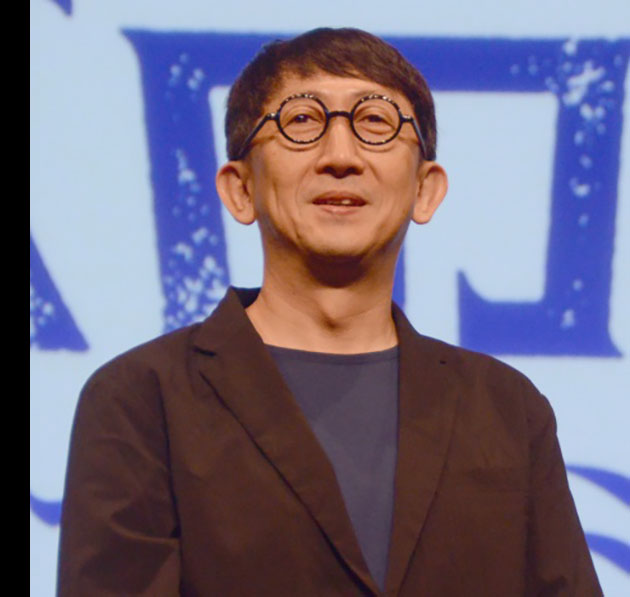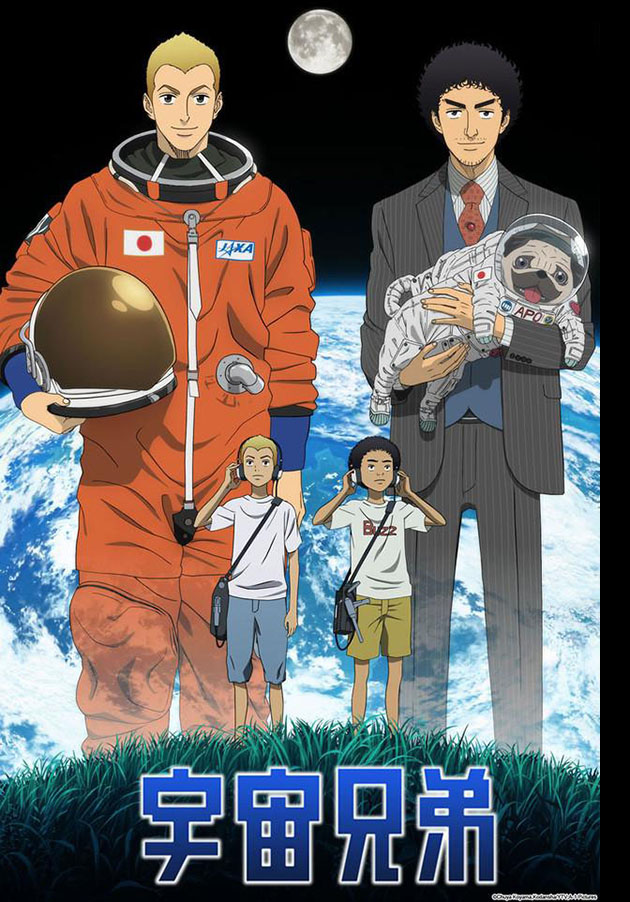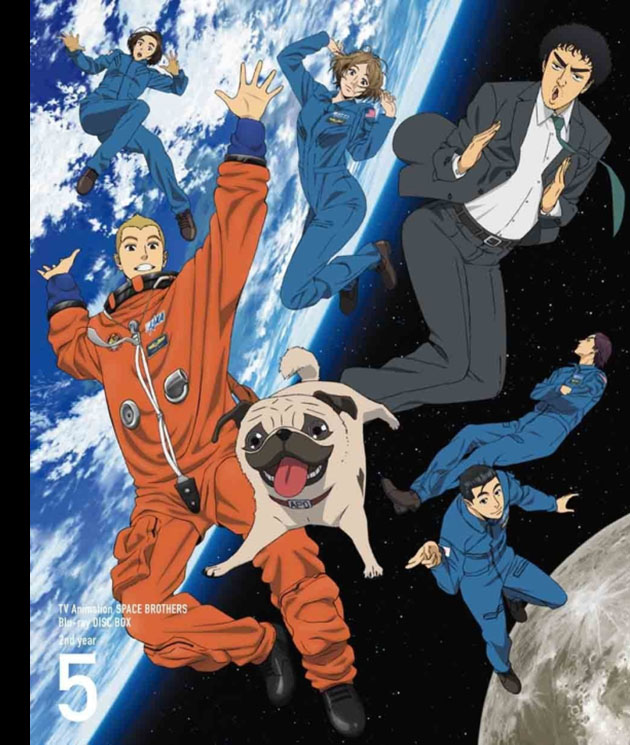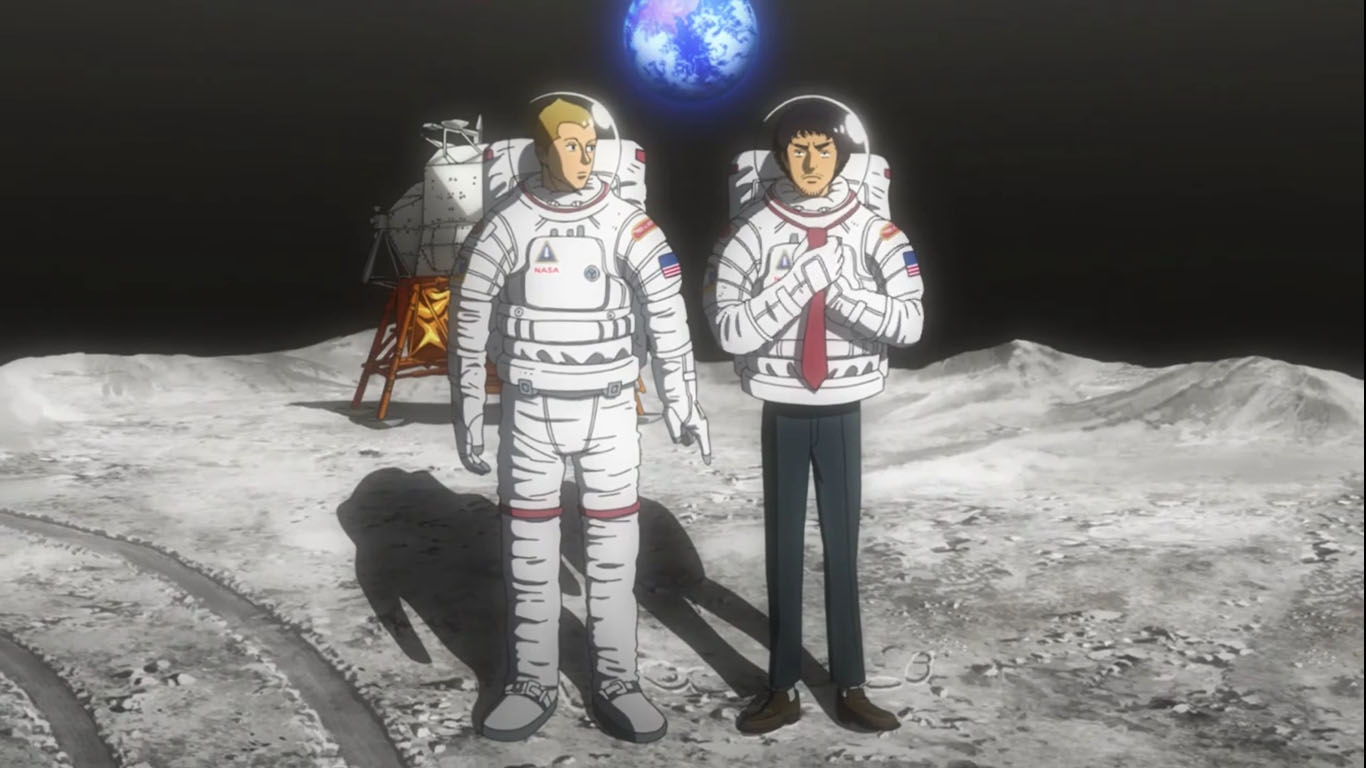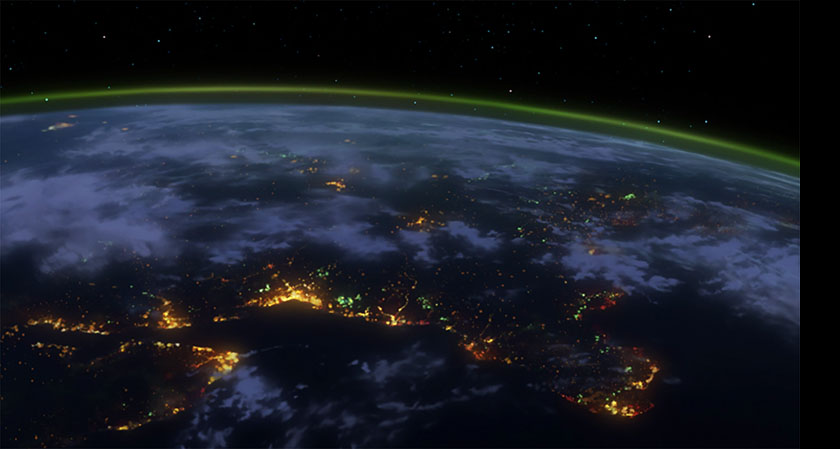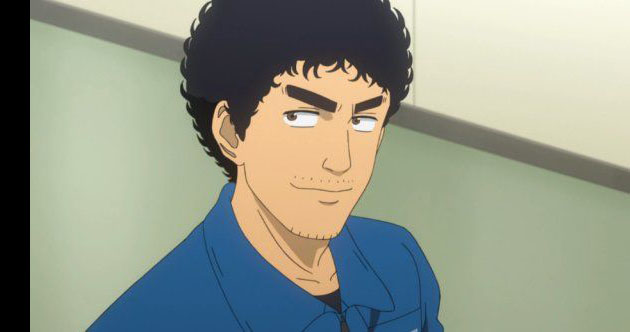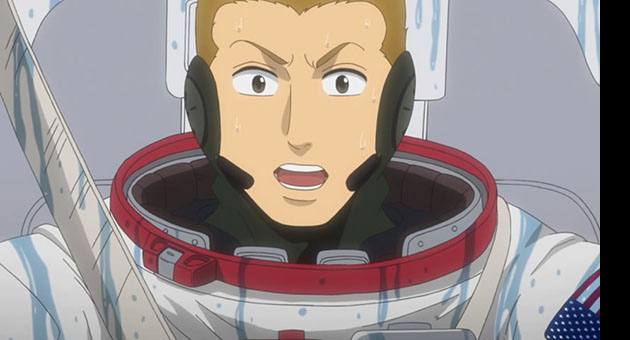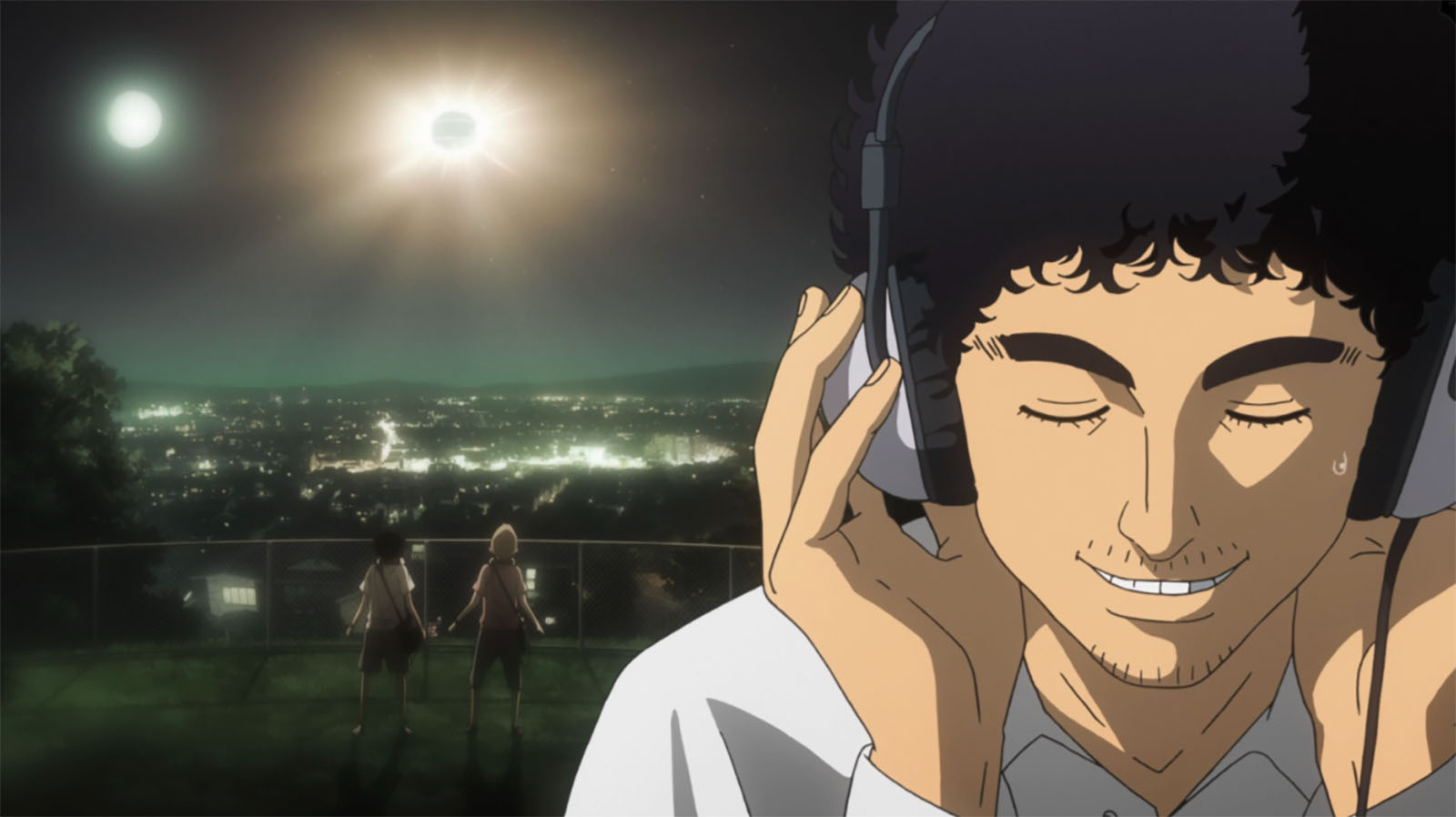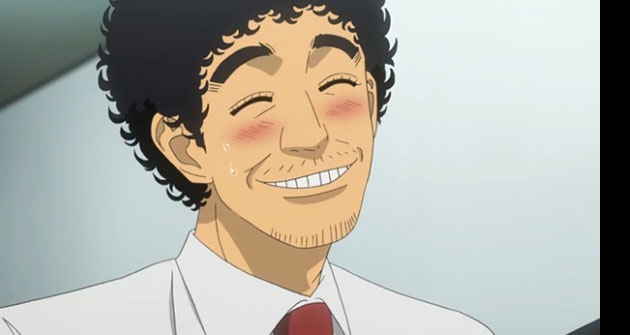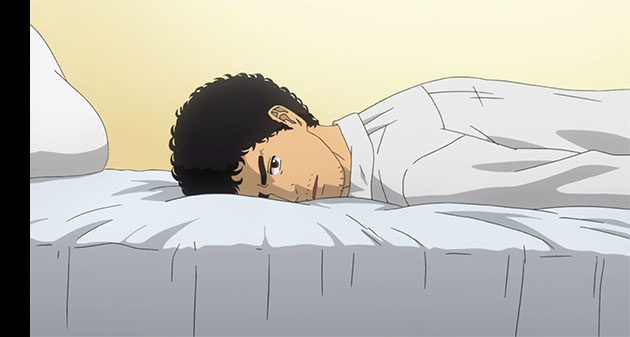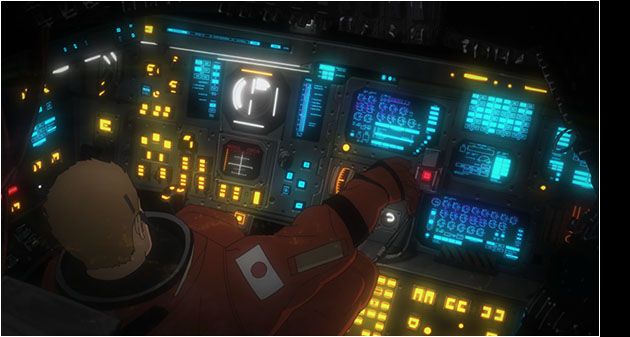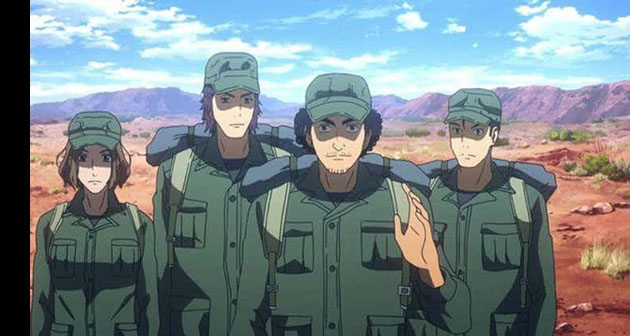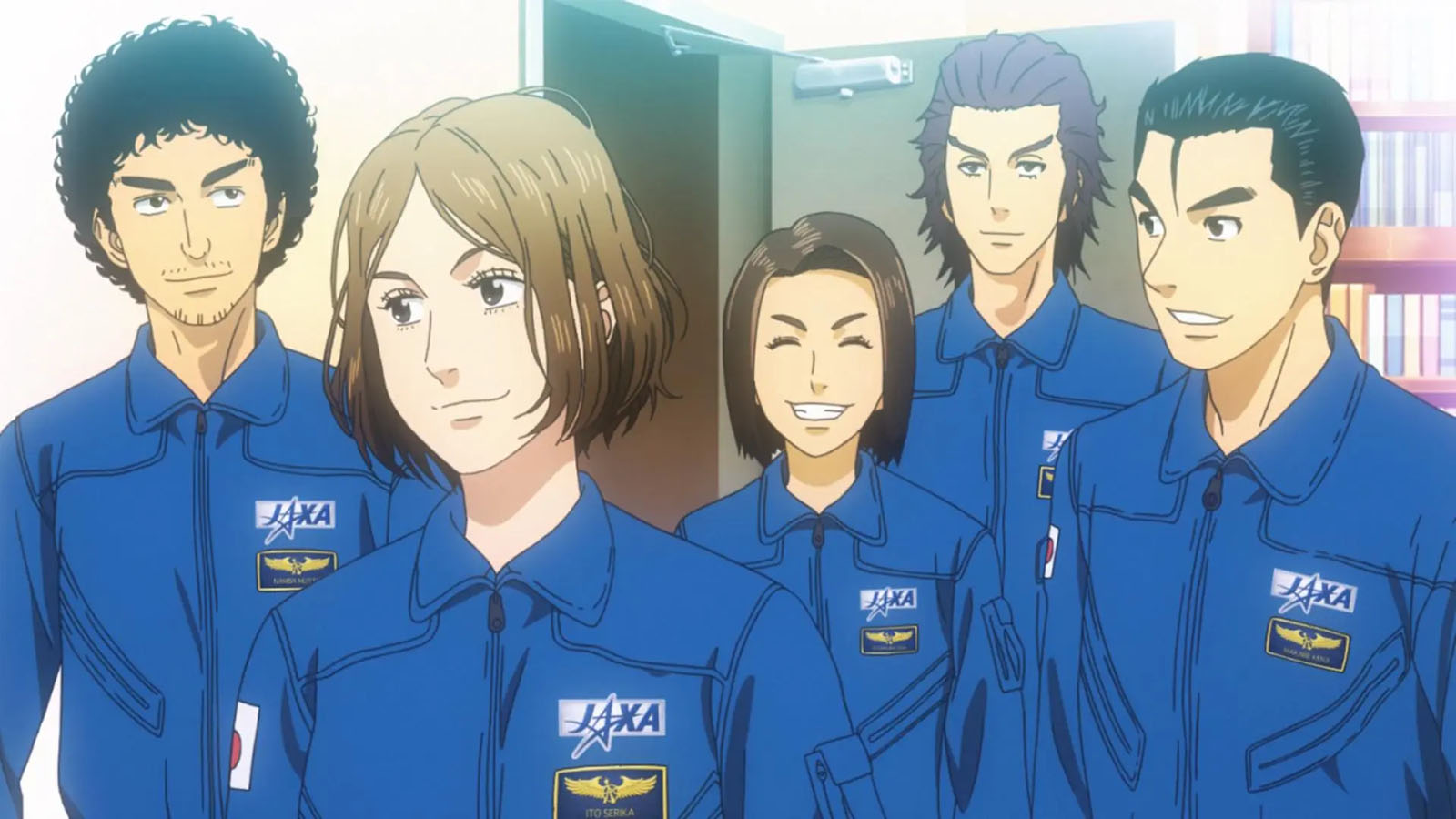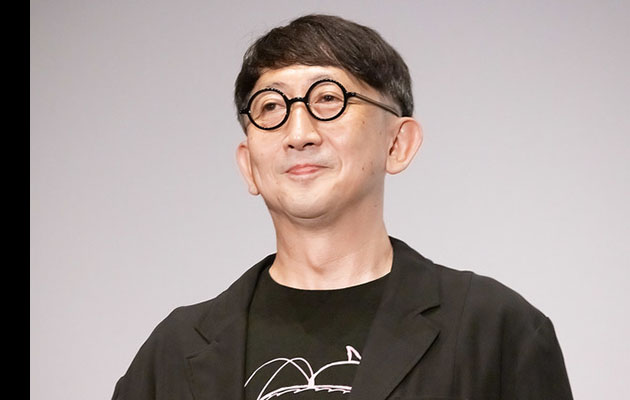Anime Director Ayamu Watanabe interview
Mutta’s charm is the anime’s spice
Originally published in the Space Brothers Official Fan Book, October 2013
See a list of Ayamu Watanabe’s credits here.
When I was asked to be the director, I thought “YES!” (Laughs)
Interviewer: When you read the original story before it was made into an anime, you knew you wanted to make it into an anime. From what point did you think about it?
Watanabe: First of all, the characters are very appealing. Also, in terms of the work as a whole, it’s all about “chasing dreams.” The main character, who is on the verge of giving up, reconsiders his dream and embraces it. I felt that the movement of his emotions and body were really wonderful. I thought, “This would make a great anime, and if I can draw it for as long as possible nothing would be better than that.” It’s a unique work, the kind that seems like it’s been done in anime before, but actually hasn’t.
I thought that if it was a drama with a certain degree of continuity, it wouldn’t have to be an anime. At that time, a live-action movie had already been decided. I thought, “Oh, a movie, maybe even a TV drama?” And so on. Then I was asked to direct it as a long-term anime, and I was like, “YES!”
Interviewer: I heard that it started out as a morning program that was mainly aimed at children. But this is a drama for adults with a lot of technical jargon. What did you pay particular attention to?
Watanabe: The original story was also published in a young adult magazine, so it wasn’t really written from a child’s perspective. I asked the author Chuya Koyama about this. “Well,” he said, “as long as they understand it to some extent, it’s fine.” We thought it would be okay to drop hints so that if a child watches it, they could ask their parents.
The important thing is the story. Since it comes from a manga, a big part of it is already established. In anime, there is movement and sound, and things flow by. So I try to make it easy for people to understand what we’re saying. Whether it’s a flashback or something else, I try to be straightforward and considerate with the visuals. Even if the words are a little difficult, people can understand them if they’re supplemented with pictures.
Interviewer: Did you have any difficulties getting started on the actual production?
Watanabe: (Sarcastically) No, not at all. (Laughs) I was trying to figure out the best direction or atmosphere to take. I was trying to find my own way. After working on the first episode, I felt like I finally got it.
At first, I had a completely different plan. During that time, I agonized over it for several months. I took the script apart and talked it through. I thought Mutta could be an active character who talks non-stop, or a comical one. I went through a lot of trial and error, but in the end I came back to the original idea. I think it was because of the process of getting to that point, but after I made up my mind to be faithful to the original story, it went rather smoothly.
In the end, the original work was so precise that there was no room for error. That’s why I couldn’t change many things. There are a lot of flashbacks in the story, and it can become a bit too much of an explanation. But I tried to keep that part as the flavor of the work.
Mr. Koyama finely crafted it, panel by panel and line by line. Each line of dialogue, and even the pauses between lines, are all very precise and important. I wondered if it would be wrong to disrupt that for the sake of animation. In fact, I wondered how close I could get to the original work. I thought it would be better if we could keep the original story and the feeling you get from reading it. That was one of the answers I came up with.
It’s very nice to have new materials, but I wanted to preserve the original. If it just feels like a copy of the original work, it may seem trite as an anime adaptation. We questioned ourselves a lot, but in the end we settled on that. It’s a strange feeling, isn’t it? But we’ve done it as much as possible.
Interviewer: It must be difficult to make a work that viewers feel is faithful to the original. Is there anything you focused on in this regard?
Watanabe: I think it’s the sense of character, the way the dialogue is delivered, and the pacing. The music helped a lot, too, and I think it also depends on the performance of the cast, including the famous actor Hiroaki Hirata [Mutta]. There are many factors that overlap, and it’s actually somewhat mysterious. (Laughs) I can’t help but feel that the original atmosphere of the story naturally overshadows the anime. This is also a strange feeling.
Interviewer: I heard that you had a very thorough meeting about the series structure with the editor of the original work. What were the main points of discussion?
Watanabe: At the beginning, we really started off with the intention of overturning the original story. We started by asking ourselves, “What kind of Space Brothers are we going to make?” and after a lot of work, we settled on the current form.
According to the author’s intentions, each character in this story has a strong will. You can try to take it apart, but you end up affirming the original shape. The core of each character is clear. That’s why I decided to always verify the “sense of character.” “What does this character think, what words does he choose, what thoughts does he act on?” You think of them as flesh and blood.
Then there’s the humor, especially with Mutta. I want to emphasize his charming side. It’s boring to simply have a bunch of people with amazing abilities. In order to portray them in a balanced way, you need someone that isn’t too cool. Someone lovable and charming.
Also, I’d like to make the most of the “gag” feeling, the part that makes you giggle a little. When you focus on the story, the humor tends to fall off. So I did a lot of research to see if I could mix those parts in a good way. Also, the onomatopoeia in the original manga was unnecessarily outrageous. (Laughs) To express those sounds, we had actors recreate them — mainly Cho, who plays the brothers’ father. We do it as little bits sandwiched into the story. There are parts where I’m not sure if I’m being serious or not (Laughs), but my thinking is that if I can enjoy it, everyone in their living room can catch the vibe as well.
Mutta’s commitment to his spacesuit
Interviewer: The story takes place in the year 2025, but it is a realistic vision of the future, isn’t it? What were some of the difficulties you faced in filling the gap to the dream theme of “space”?
Watanabe: I think it’s the authenticity. If you call it reality, then that’s all there is to it. For example, in terms of the backgrounds, I wanted something that was within the realm of what you can actually see. We value reproducibility and persuasiveness. Fortunately, we can now see images of Earth from the ISS (International Space Station). It’s important to provide such information accurately.
It may be troublesome, but it’s like, “Don’t make a leap.” Actually, it’s very difficult to get the right balance. An exaggerated picture can be easy to understand. It’s just that it comes off as a bit thin. The framework of a story can supersede reality quite easily. Everything is possible. But this work is designed to keep in step with reality. That’s why Earth is so wide (and impossible to shoot). We don’t want images that show the entire earth. There is some imaginary imagery in the OP and ED titles, but in the main story, we don’t use leaps of expression.
Also, it depends on the situation. For example, if there’s an imaginary scene of “Astronaut Mutta Nanba,” we don’t dress him up like a real astronaut. Since that’s what he’s aiming for, I decided not to have him wear a real spacesuit until he becomes a real astronaut. So we have him wear quite a few fakes. It’s the same in the OP and ED, where Mutta’s spacesuit is also fake. It has an impossible shape. The blue suit is also a replica. It’s easy to draw, but in my mind, it’s something we have to put on hold. It’s just a trivial thing, really. (Laughs)
Interviewer: The author, Mr. Koyama, also supervises the scripts and comes up with various ideas. What kind of impact does that have on your work?
Watanabe: I think it’s been a very meaningful stimulus. Above all, having his opinion deepens the link with the manga. I can get the parts of the story that I couldn’t extract from the manga directly from the author. Being able to depict the anime as something original is what we want to do the most, like side stories that would happen between panels.
We like to receive the unrevealed concepts as hints or concrete ideas, including sub-characters, and the story is further enriched by these parts. I think this is especially true when we get closer looks at individual characters, like for Kenji’s story (Episode 35) and Serika’s story (Episode 36). There are also a few things that we added to the story by asking the author for extra information. Manga is not anime, and anime is not manga, but both manga and anime are Space Brothers.
In short, part of the anime version comes from Mr. Koyama. I want him to be happy with it, and I want people who like the original to enjoy it. The whole thing is Space Brothers, including our thoughts, and I’m very grateful to Mr. Koyama for his cooperation. It makes me and all of my staff want to respond to his strong sense of commitment in a good way.
Furthermore, there are some tasks that only the author can do. We all love the work too much, for better or worse. (Laughs) The contents and continuity are very important to us. However, Mr. Koyama himself can come up with bold recombinations as only an author can.
Interviewer: What kind of thing, for example?
Watanabe: Like changing the events. For example, he can change the order of A, B, and C or reverse it so C comes before the others. It becomes more interesting…that’s what I mean. We’ve been working on this project for a long time, and any time we’re about to lose our boldness, it gives us a big boost.
For example, in the episode Two Keyboards (Episode 68), Mutta and Hibito send a keyboard to Sharon’s house. At the beginning of the episode, there is a scene of Mutta preparing to send the keyboard. At the end of the episode, the story is revealed in a letter. They’re not just linear scenes. Sometimes, by differentiating them in advance, you can increase the interest. This was a part that Mr. Koyama did a great job of reconfiguring. So I put his name on it for script credit.
Isn’t the first episode the most original?
Interviewer: You were in charge of the storyboard for Episode 1. What did you focus on?
Watanabe: Now that I think about it, the first episode is the least like the original work, isn’t it? (Laughs) Actually, it was the most rearranged. As I mentioned earlier, there was a lot of trial and error before we got Episode 1 into that form. As a result, I’m glad that I struggled with it to the fullest.
I had a hard time figuring out what kind of person Mutta was. I thought it would be good if I could portray him in a comical or interesting way. So I didn’t take it too seriously. I didn’t think of him as a serious character. Now that I think back on it, I have to reflect a little.
In the future, there would be serious stories and sad stories. Why would Mutta be so weird in just this one? (Laughs) But something I wanted to do there was to capture all of Mutta’s character in one episode. The first story is hard and troublesome, isn’t it? Isn’t that its condition? So you have to put in all the setup information. It’s not like the story is already going, but you have to reach that promise.
There are so many things to do that I get overwhelmed and don’t have time to enjoy it. As I was boiling, baking, cutting and pasting, many things were gradually stripped away. In the end, I was left with a strange feeling. (Laughs) When I rewatched it, there were a few parts where I thought, “This isn’t in the original story at all.”
However, I think it was a good statement of, “I’m going to do this here.” I felt that if I didn’t add something of my own, it wouldn’t complement the future of Space Brothers, so I think part of it was taking a dare. It was a good way to “shake things up.” In terms of motivation, I wanted to say, “This is how we do it in anime!”
Watching it now, it’s completely different. I don’t know how Mr. Koyama let me get away with that. It’s completely clear in the 0P and ED titles. In the first OP, it suddenly feels like a rainbow. (Laughs) All these things were packed into the first episode, and the OP and ED titles for the first season.
Interviewer: From your perspective as the director, what kind of team is the staff of Space Brothers?
Watanabe: To put it bluntly, they’re very capable people who love this work above all else. Everyone is very passionate about it. I think each department expresses their love for it. So, in that respect, it’s really a blessed work, if I may say so myself.
We’re working under a very strict schedule, so we may not be able to do everything to the best of our ability. But we do the best we can each time, and we do our best to deliver each episode one by one.
Some of the artists even went to the trouble of moving to Tokyo by themselves just for this work. It’s like everyone is comparing their love for it. (Laughs) Truly, no one is indispensable. It’s really a “space staff” where everything is going toward Space Brothers. I think so from the bottom of my heart.
Interviewer: It’s a year and a half since the show started. Has the teamwork and atmosphere changed?
Watanabe: I guess you could say that we have a common ground and share a vision of what we want. We’re able to communicate with each other. With longer works, there are times when it becomes routine, like “this is the way it’s supposed to be.”
Unexpectedly, it’s a work that doesn’t allow for stability. The concepts and the scenery changes frequently, so I have to verify it each time. The other day it was in the desert, and now it’s in the ocean. Each time, the staff has to re-train their knowledge. I think this keeps a good sense of tension.
In fact, we’re all very particular about the reality of our work, so we go through as much material as we can get our hands on. We are very particular about everything, collecting materials, verifying them, and reproducing them. It’s just like space development. And thankfully, Mr. Koyama’s help was not limited to just revising ideas and scripts. He also shared all the photos that his original manga team used during the production process, as well as the materials they obtained based on their interviews. We can get hints from the same things.
We can share everything with the original side, and that makes us fall in love with the work more and more, doesn’t it? (Laughs) The sky in the Russia section, the pictures of NASA facilities, and procedures for how to proceed with tasks were all taken from the materials he gave us.
Also, in writing the scripts, we review things that [Writer] Yoichi Kato researches, and then the drawing team goes back and reexamines the script and applies it to the setting, and so on. It’s as if everyone is already prepared for the project, and it’s like, “Of course we have to go that far.” In the beginning, some people were confused and said, “I haven’t heard of that,” or “I don’t get it.” But as we continued to draw, that steadily changed.
A work that also depicts the thoughts of people who entrust their dreams
Interviewer: Is there a scene or a line that you particularly like, or something that left a strong impression on you?
Watanabe: I really like all of them. But I’m getting older to a certain extent, and I’m able to see things in different ways.
Among them, I like the way [Mutta’s benefactor] Tadashi Hoshika of JAXA is involved. I like the scene where he meets Mutta again and says, “My heart is dancing.” He doesn’t tell Mutta things like, “If emotions aren’t important, let the computer decide.” When the people who chased their dreams in the past become those who entrust their dreams to others, their feelings come out again in those they entrust.
Even in making anime, it’s not like you can do everything yourself. There are things that I have to entrust to younger people. It’s the same thing. If I get into such and such a situation, can I push the staff forward, or should I protect them? I feel like I am always being asked that question.
Interviewer: What do you want people to feel the most through your words?
Watanabe: I would say that “dreams change people.” It’s a bit of a cliché, but I think it’s the beauty of living a life with dreams. People can’t accomplish anything alone, only through relationships with their peers and society. New encounters…these are things that expand your world and lift you up.
In the course of our lives, we sometimes ask, “What am I, and what do I want to be?” When we’re troubled by something that stops us or causes conflict, we need the power to go beyond it. I would like to tell you that there are stories about this and people like this who give you hints for how to go beyond. I hope this will be a stepping stone and a boost for the readers and viewers. In the end, I hope it will be something like that.
Of course, there’s also the appeal of space. Space may seem outlandish and distant, but in fact, if you look up at the sky at dusk, the stars shine brightly, and even in the daytime, if you strain your eyes a little, you can see them. You can see the sun and the moon rising, and because they’re closer they feel natural. I think it would be really wonderful if the children who see this become astronauts in the future.

